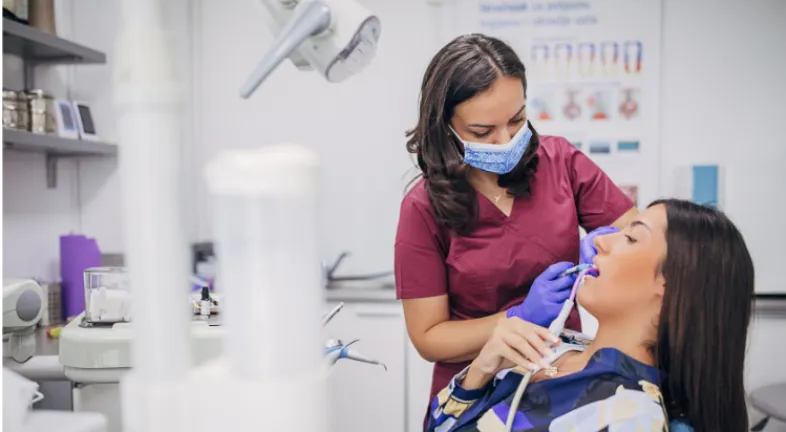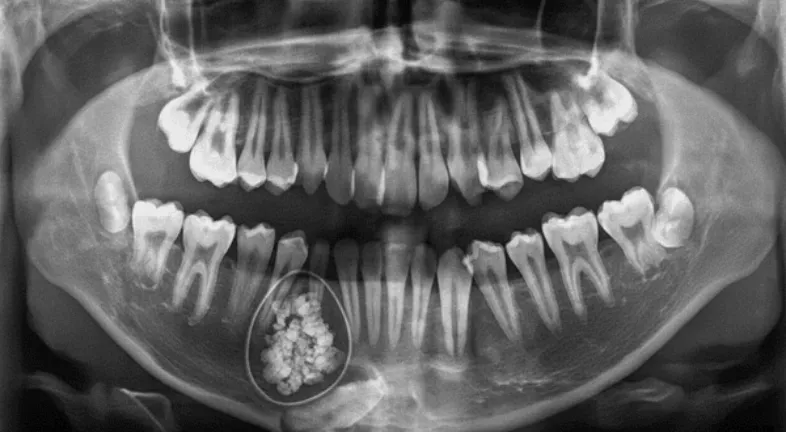
Table of contents
There’s no denying the beauty of an attractive straight white smile but unfortunately, not everyone starts life with perfect teeth. Many children and adults suffer from malocclusion, with one common type being an overbite.
Most people looking to straighten their teeth have the misconception that orthodontic treatment is intended to improve the aesthetics of a smile. Whereas, from a dental perspective, it’s more about helping to prevent the long-lasting effects on oral health that arise from crooked teeth or an overbite. But before discussing methods of correcting an overbite, let’s look at the definition of malocclusion—--- and how it affects oral health.
According to Healthline, any deviation from ideal occlusion (alignment) is known as a malocclusion or bad bite. This includes conditions such as an overbite, underbite, open bite, crossbite, spacing, and crowding. An overbite typically refers to when the upper and lower jaws are misaligned causing the top teeth to cover the bottom teeth. Often an overbite is hereditary but it can be made worse by habits such as thumb-sucking in children and overuse of bottle feeding or a pacifier.
While correcting an overbite improves the aesthetics of the smile and may give a person’s confidence a boost, more importantly, it helps prevent a wide range of dental problems including:
Having examined your mouth and jaw positioning, a dentist or orthodontist can determine the most appropriate treatment compatible with an overbite. X-rays and impressions will also be taken to get a better understanding of the alignment of both jaws.
Severe overbites may necessitate a tooth extraction to enable other teeth to move into their new positions more easily. On rare occasions, certain malocclusions may require oral surgery to reposition the jaw.
While it’s easier to fix an overbite in young children while their jaws are still developing, there’s no upper age restriction for orthodontic treatment. Adults with an overbite may need to wear fixed metal braces if their condition is severe but in many cases, clear braces work just as well to straighten the teeth and produce a beautiful even smile.
Clear braces are worn over the teeth like a mouthguard and because they’re made from clear plastic, it’s hard to spot that a person is wearing them. It’s this ‘invisibility’ factor that makes them a preferred choice for adults and teens who dislike the thought of visible metal brackets and wires to straighten teeth.
Clear braces treatment utilises a series of aligners that gently apply pressure to the teeth to move them into their correct position. Each set of aligners is worn for around 10 days and then swapped out for the next in the series until the last set has been worn and the teeth are straight. Treatment takes 9-12 months on average depending on the severity of the overbite.
Another benefit of clear braces is that they are removable, and indeed they have to be removed by the wearer when eating and drinking anything other than water. Ultimately, this means no food restrictions and less challenging brushing and flossing.
Finally, clear braces treatment requires no dental visits as opposed to metal braces that need frequent adjustments to tighten the wires. In fact, with clear braces from Caspersmile, the aligners are delivered directly to your door with the entire orthodontic process carried out virtually.
So, what if you have an overbite? Fixing it with clear braces will not only give your smile a makeover but will help prevent dental problems in the future and improve your overall health.
The cost of clear braces in the UK according to Dentaly.org ranges from £1,500 to £5,500 for most people with an average treatment cost of £2,500 to £3,000 – which in anyone’s book is a lot of money. The good news is, however, that clear braces cost considerably less at Caspersmile. Patients can straighten their teeth at home for just £625. To find out if you’re a suitable candidate for their clear braces, you can fill out a free online assessment form.
It's important to fix an overbite. Not only does it make your smile look better, but it also helps you avoid problems with eating and talking. Over time, an overbite can wear out your teeth and even cause jaw pain. If you're worried about your overbite, it's a good idea to opt for a teeth straightening treatment.
Curated the best for your knowledge
.webp) Tooth Resorption: Causes, Symptoms, and Treatment Options
Tooth Resorption: Causes, Symptoms, and Treatment OptionsTooth resorption often goes unnoticed until real damage appears. Many people discover it during a routine dental visit and feel a wave of fear, wondering how such a hidden process could silently weaken their smile. The truth is that tooth resorption is more common than most expect, and early detection can make all the difference. By understanding why it happens, how it progresses, and which treatments actually work, you can protect your teeth with confidence. You don’t have to feel overwhelmed. When you know what to look for, you stay one step ahead and safeguard your long-term oral health.
Read More Teeth Troubles Explained: Causes, Symptoms & Fixes
Teeth Troubles Explained: Causes, Symptoms & Fixes Teeth problems happen when we take our pearly whites for granted. When our smile is nice and healthy, we don’t think much about it. And the moment things go south, we panic. Saving, or remaking, that smile becomes a priority. For some, though, the issues are present right from the start. Misalignment, bite issues, and teeth troubles that are more “structural” in nature. They don’t happen due to neglect; rather, they are given by luck, God, nature, whatever you believe in. That being said, no matter the type of tooth trouble, there’s a solution out there. And we’re exploring all that today, teeth diseases and treatment, one by one.
Read More Odontomas: What They Are and How They're Treated
Odontomas: What They Are and How They're TreatedSome dental conditions are quiet. Too quiet, in fact. Odontomas fall into that category. They rarely make noise, yet they change things beneath the surface. And people usually have no idea about them. While malocclusions, teeth shifting, discoloration, or other cosmetic dental issues are fairly well known, odontomas are not. So, an odontoma is technically a type of tooth tumor. It’s benign, harmless, but oddly structured. Hence, it can interfere with tooth eruption, displace teeth, or cause swelling. However, there’s more to it. Here’s a deeper dive.
Read MoreQuick Links

Heading